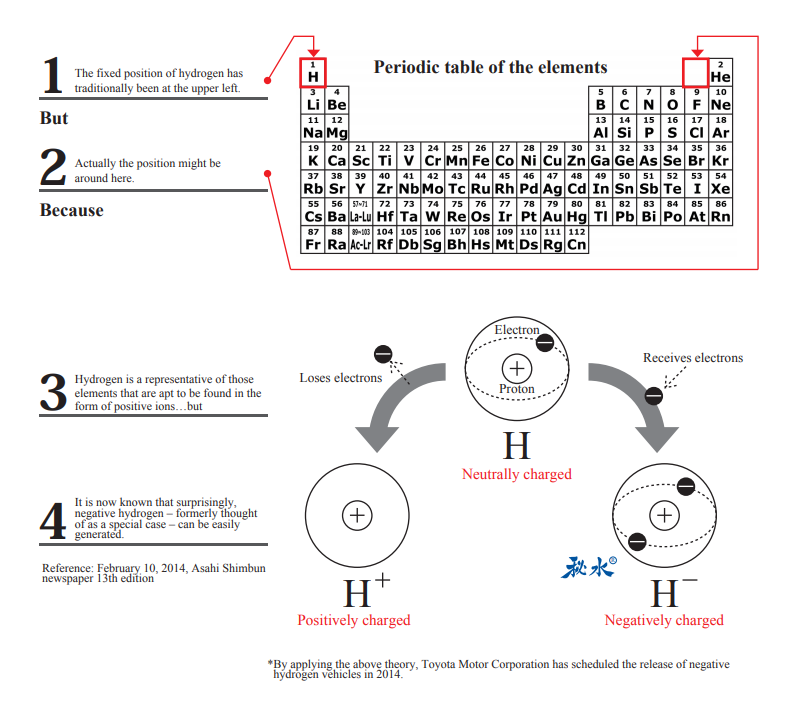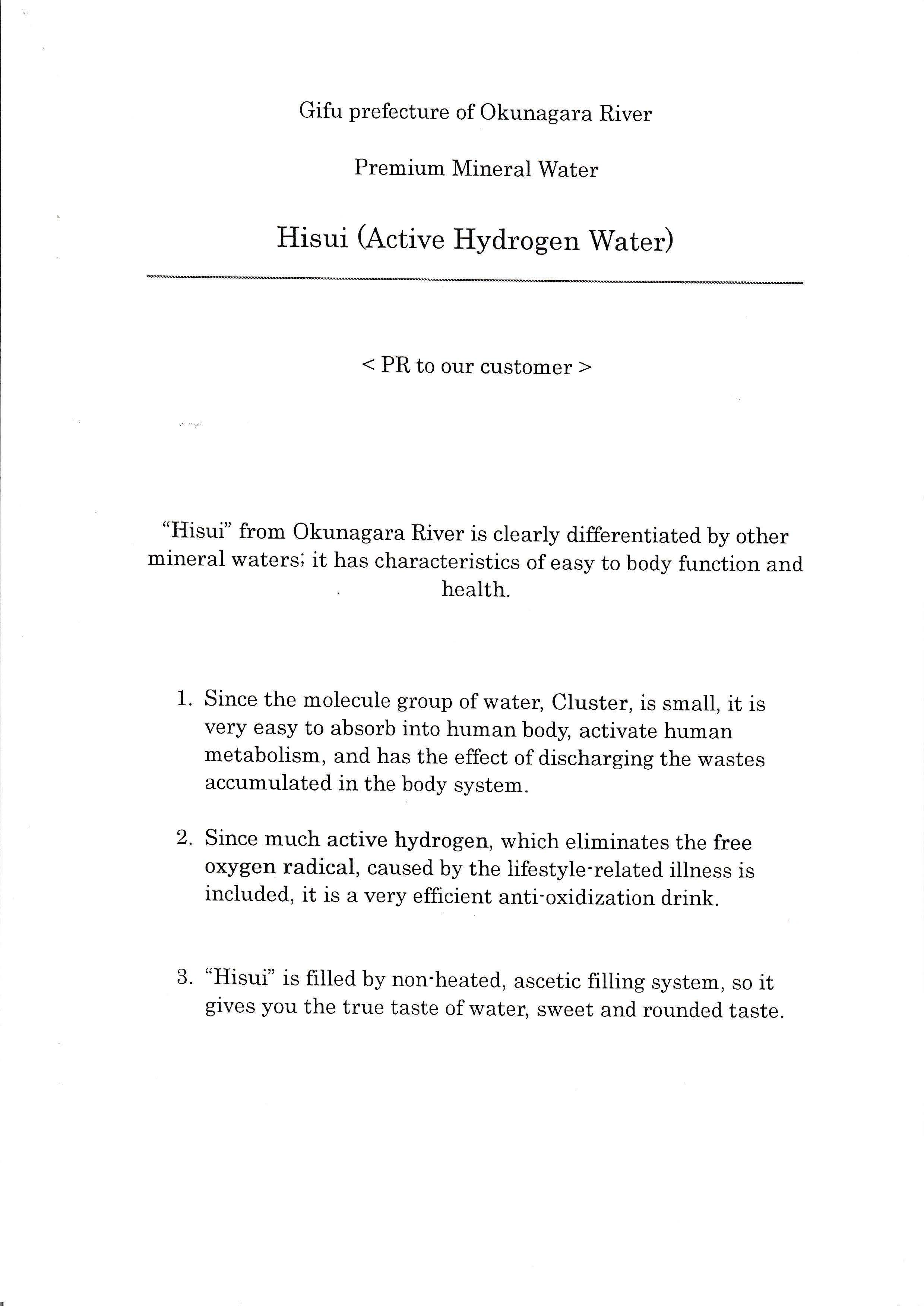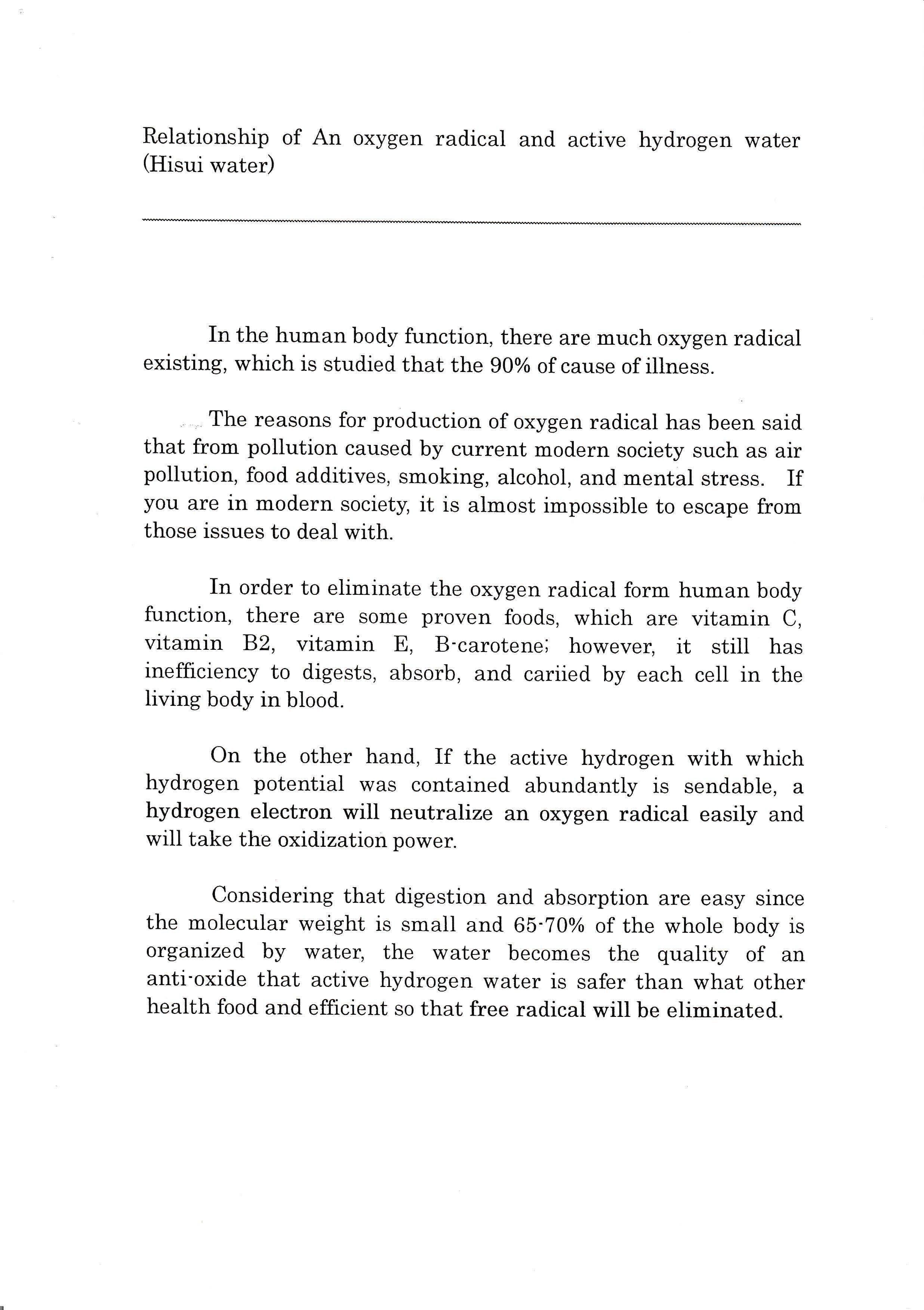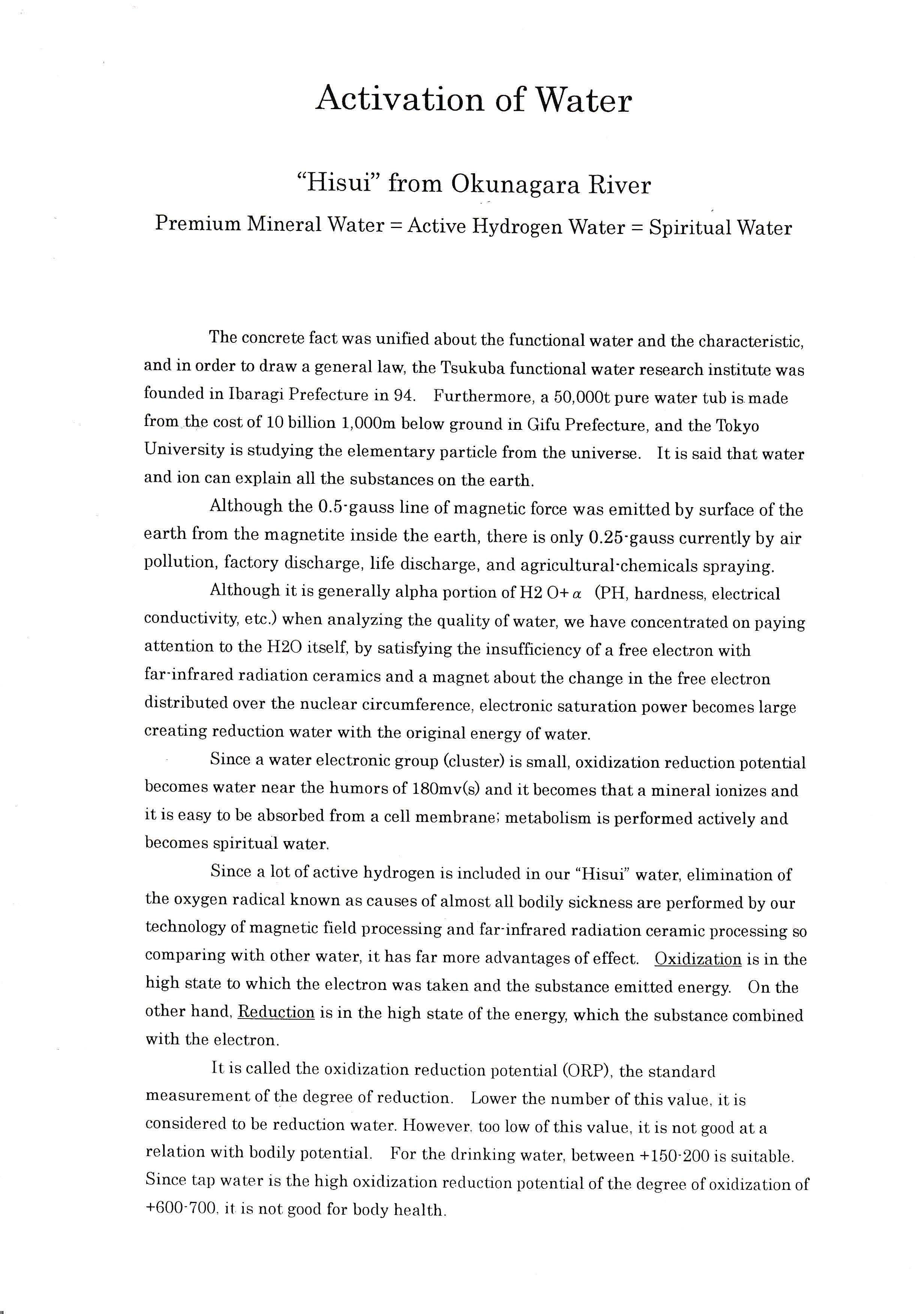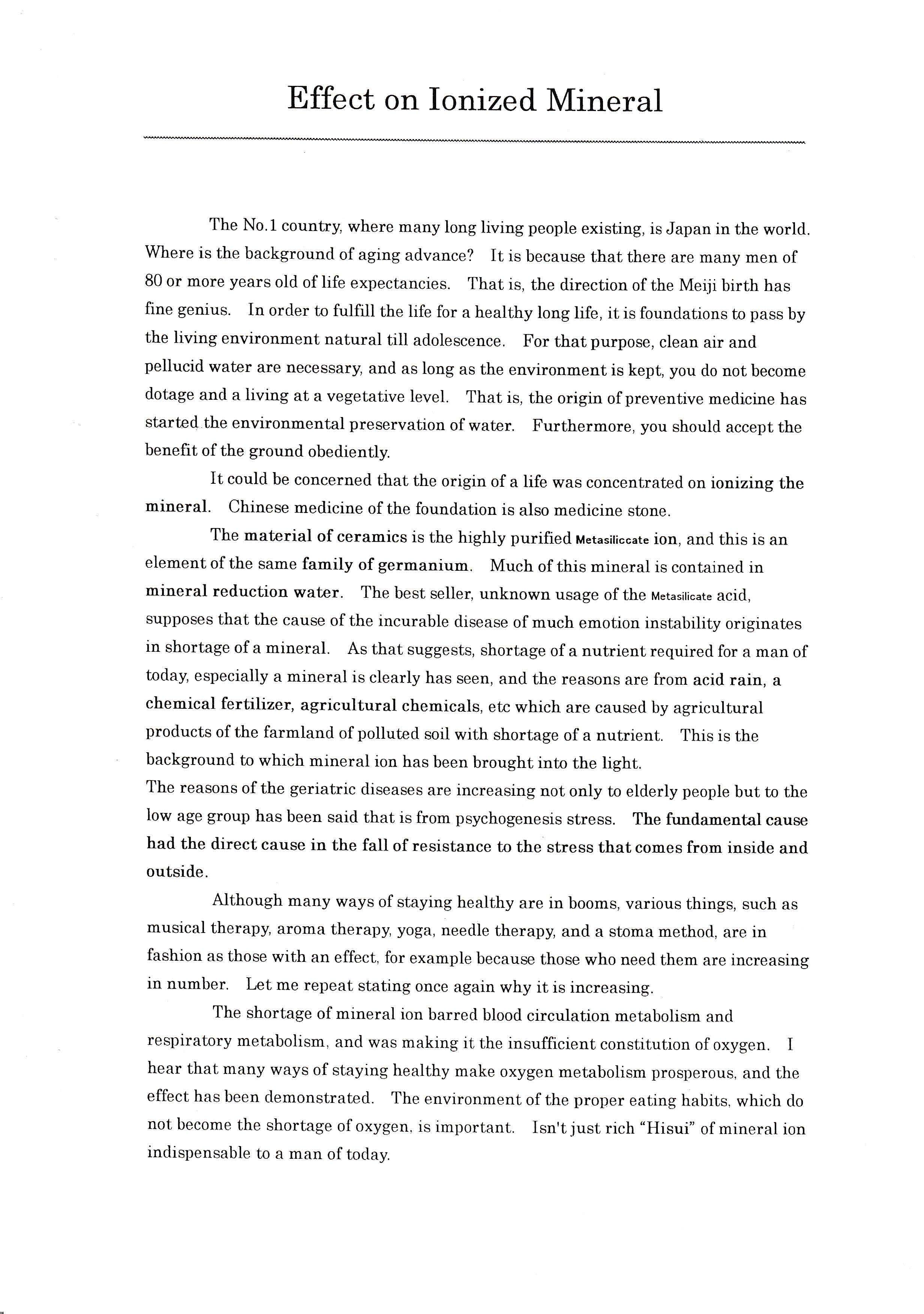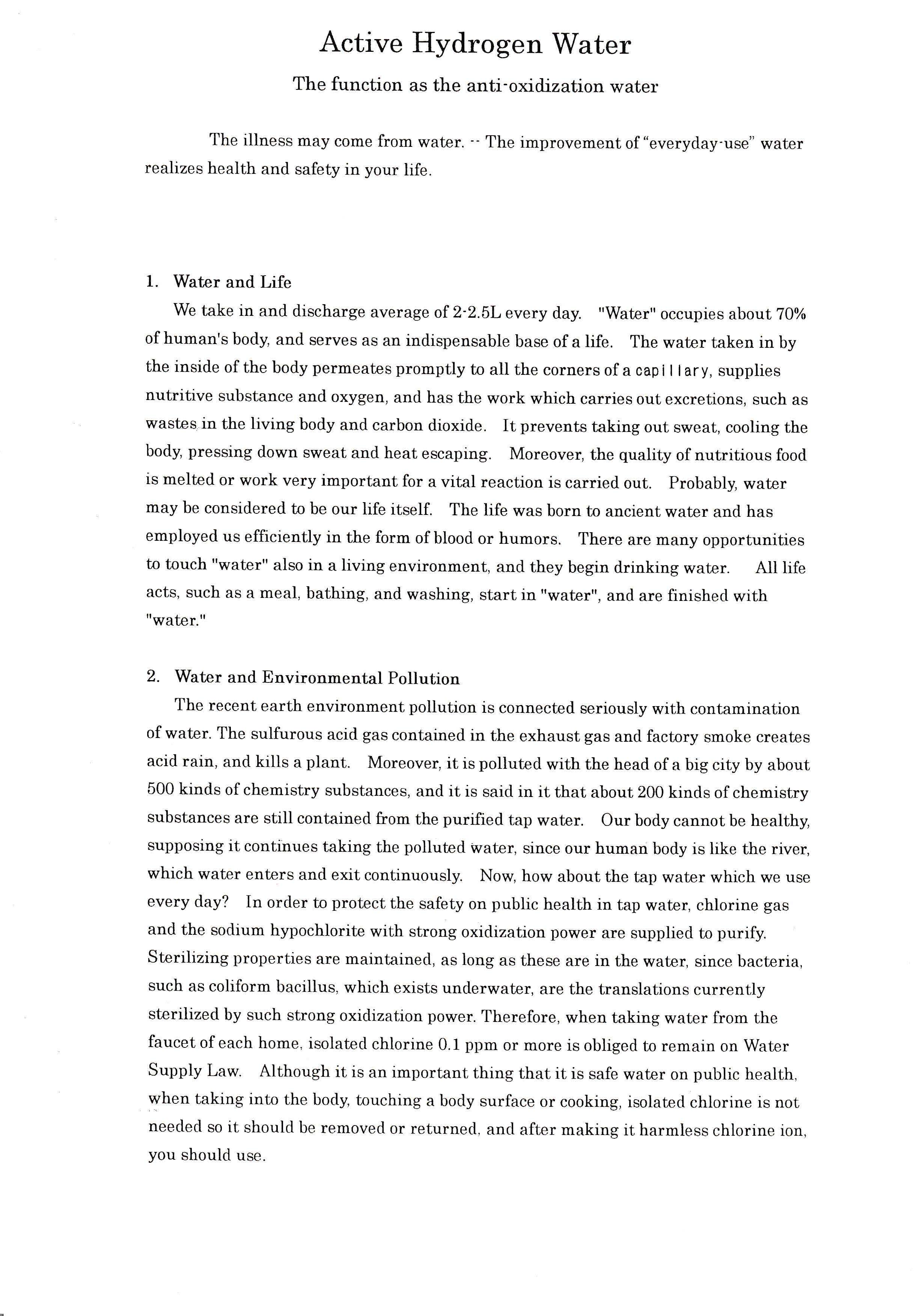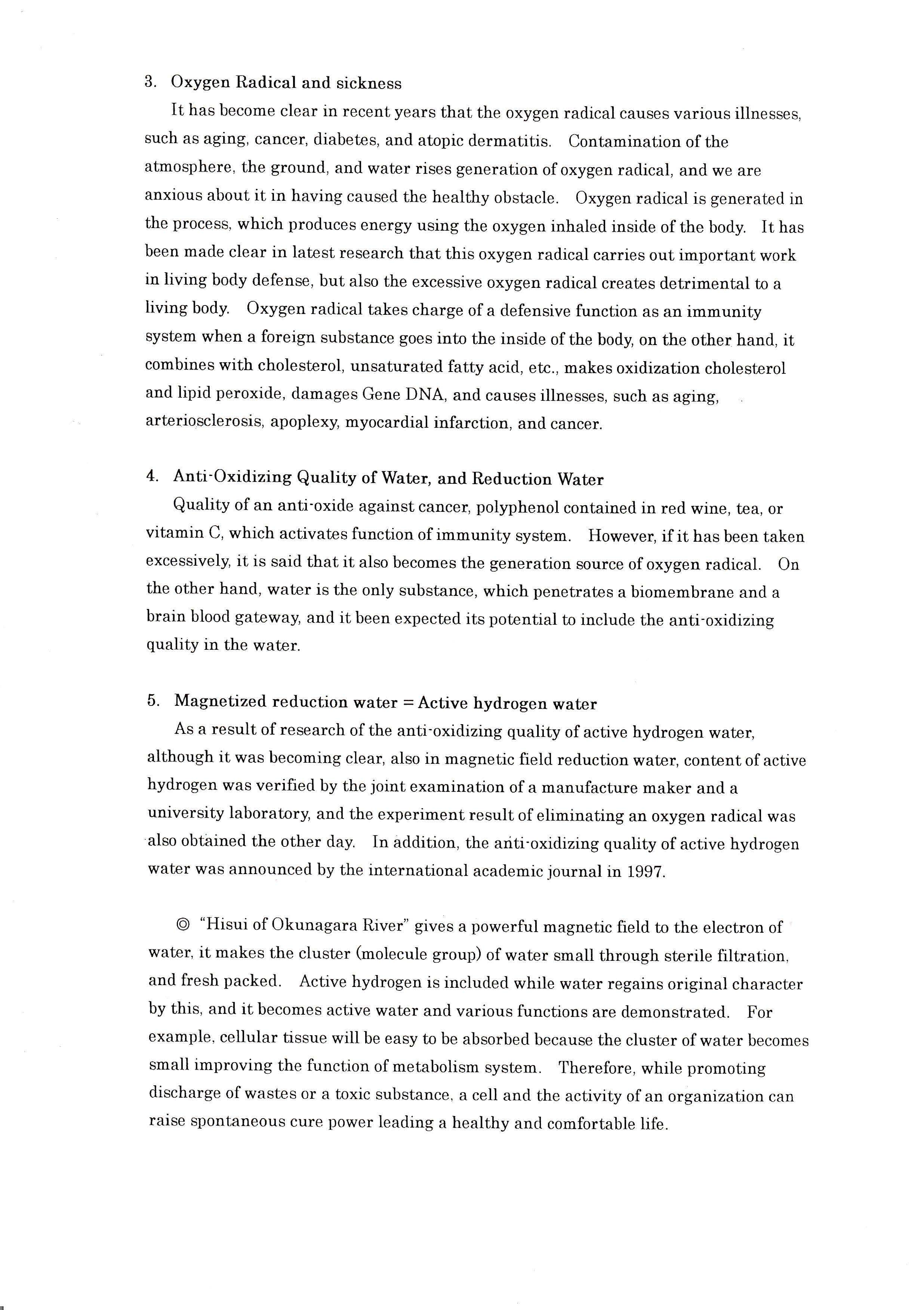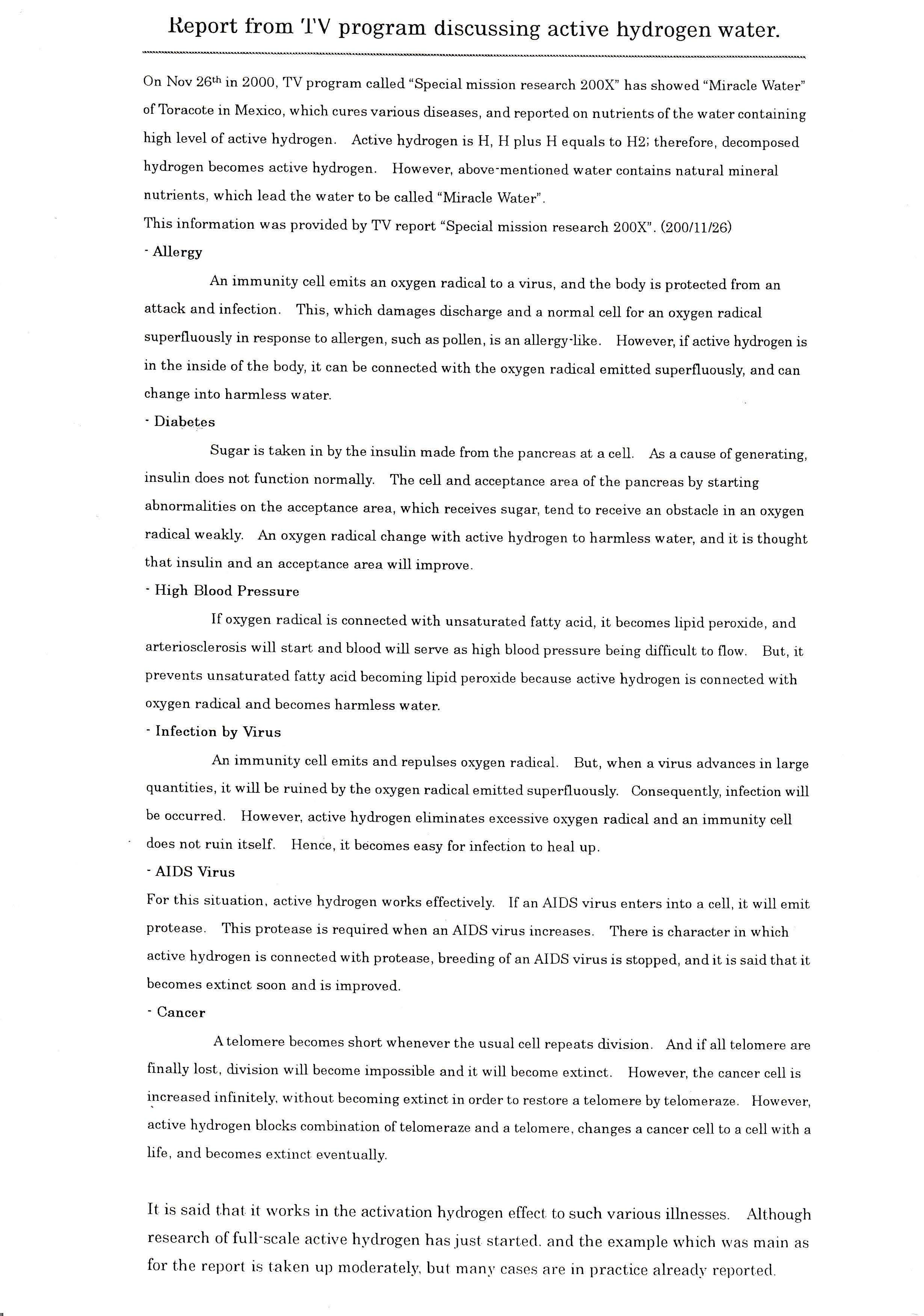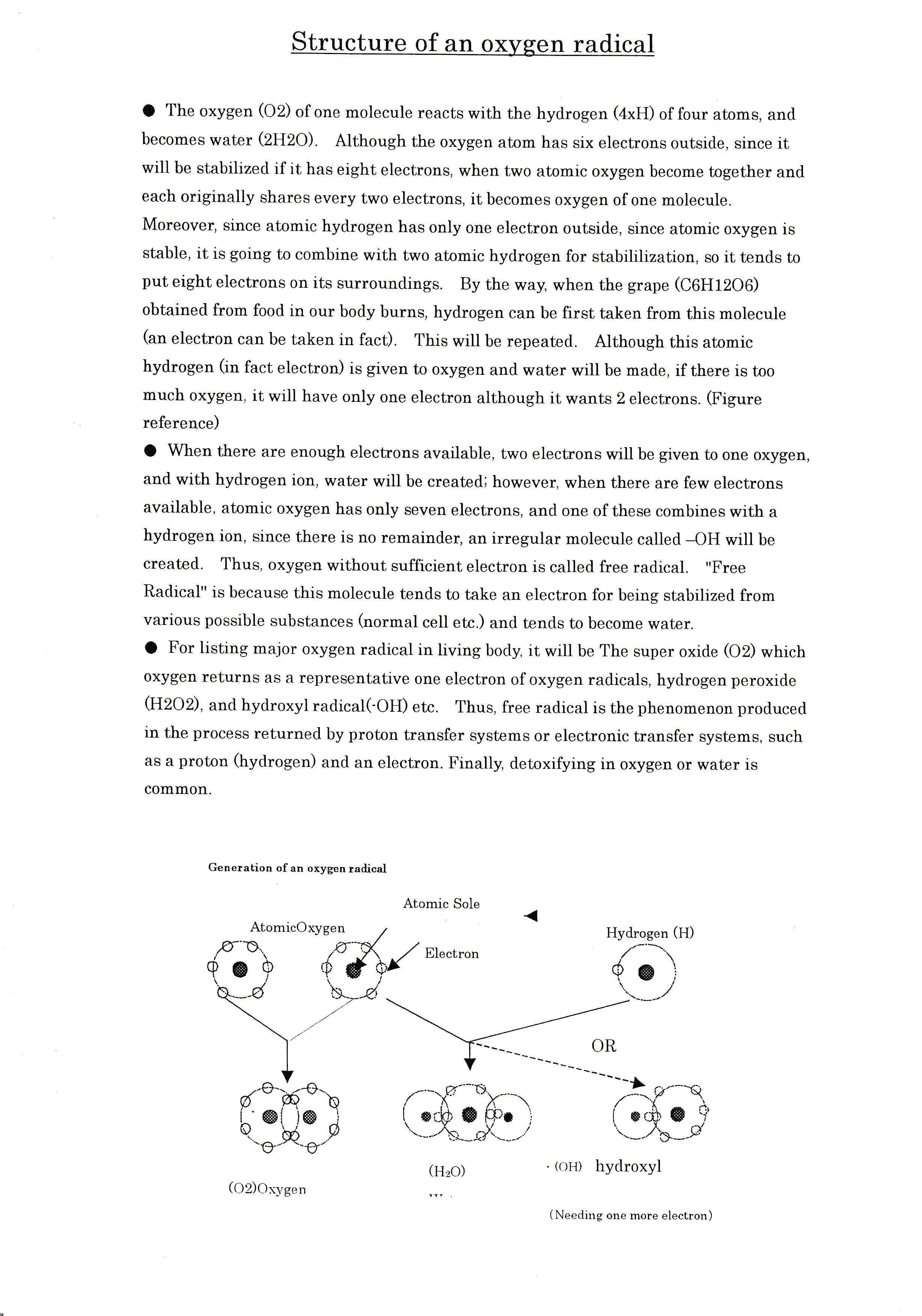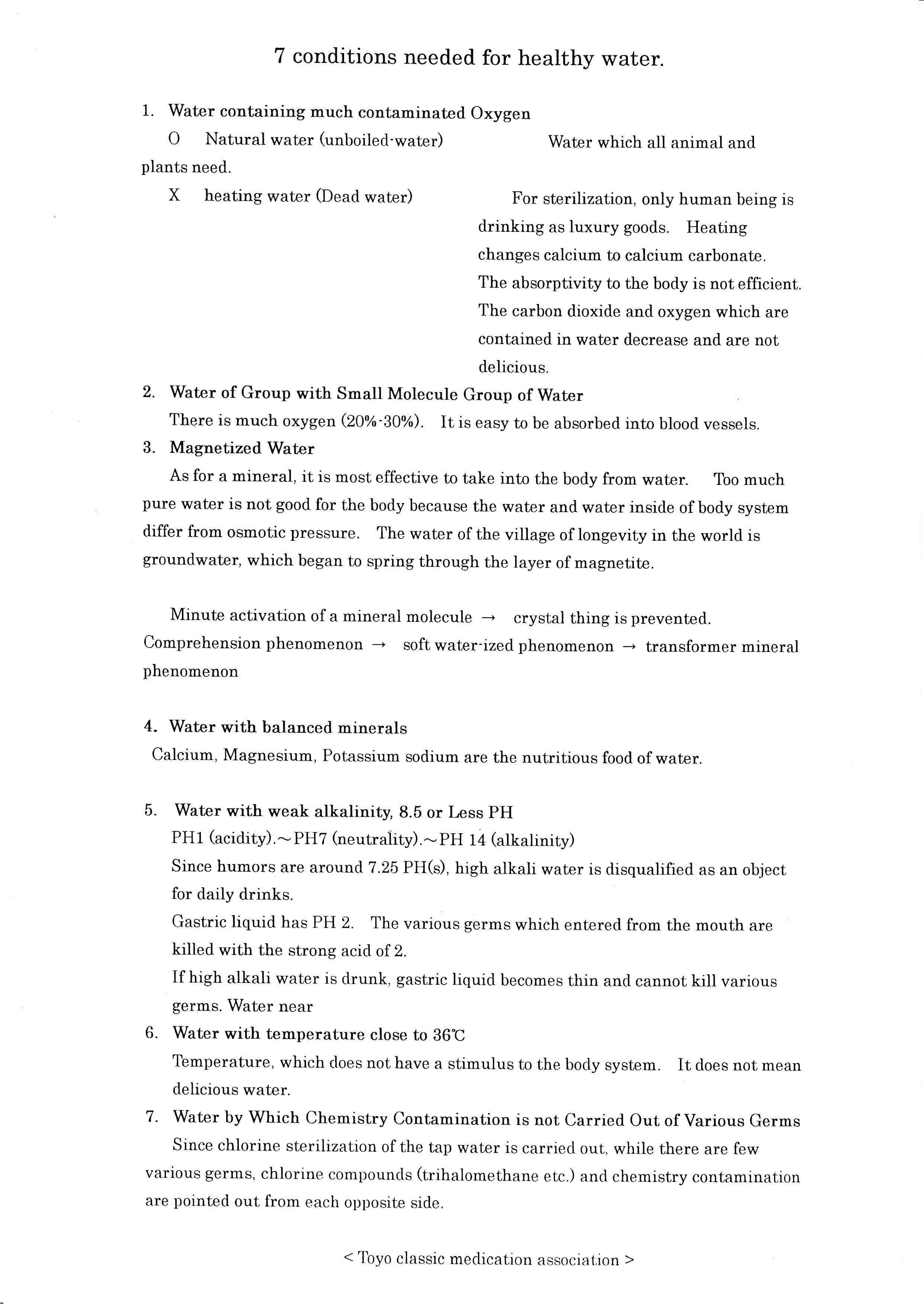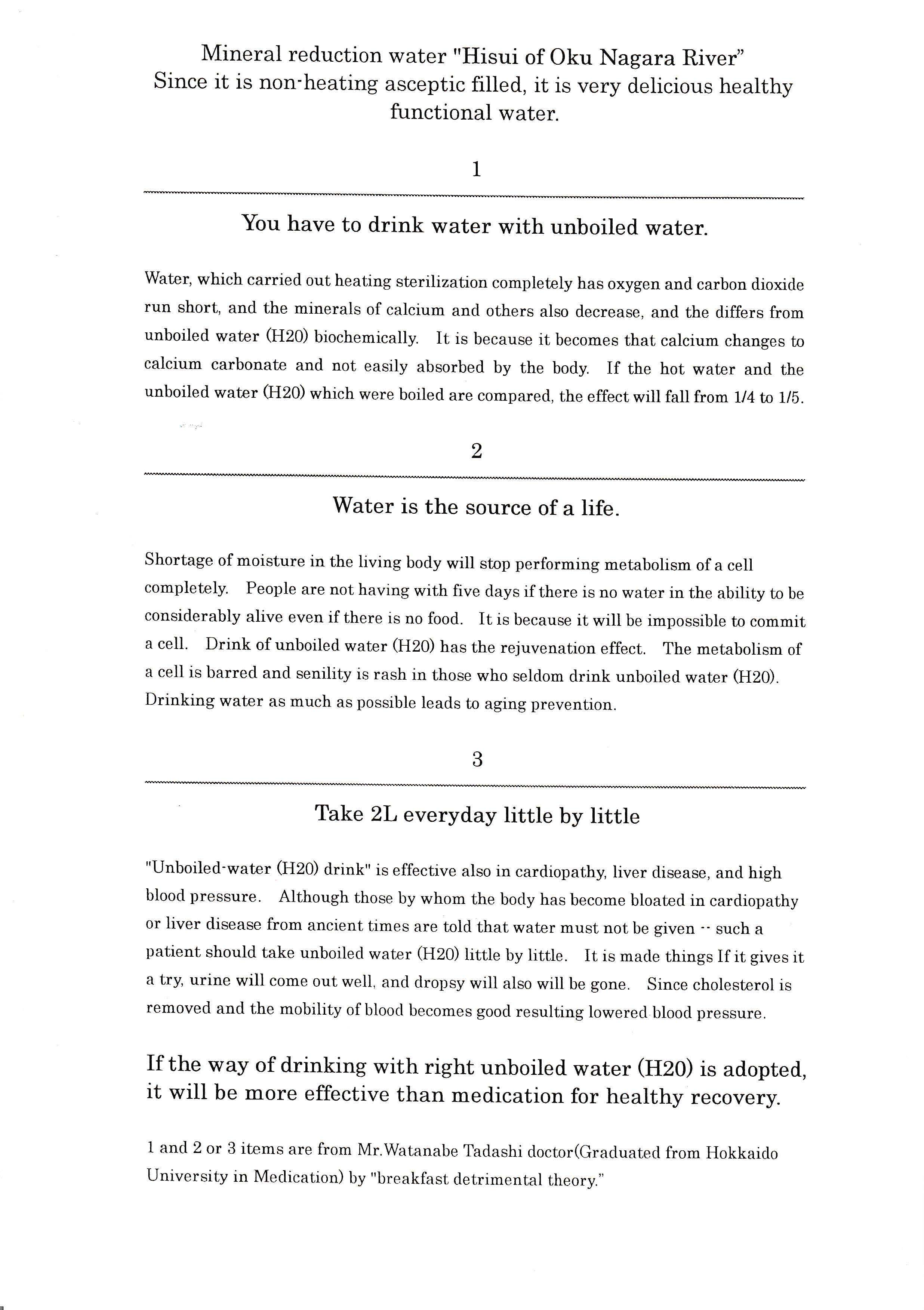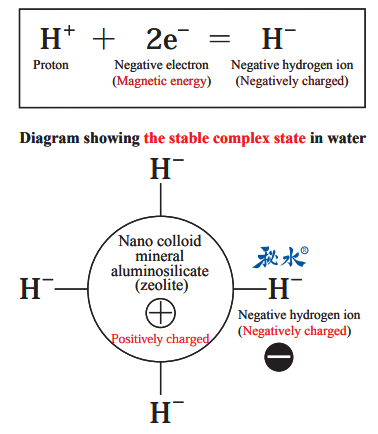
To manufacture the Technos active hydrogen water, in the patented circulation system water activation
equipment, far-infrared ceramic balls and strong magnetic fields (magnetic energy) are used to generate
negative hydrogen ions and activate water.
*The main components of the far-infrared ceramic balls are zeolite (aluminosilicate) and ferrous and ferric iron.
Negative hydrogen ions, by bonding with active oxygen, neutralize and detoxify it. Active oxygen is considered
to account for 80-90% of the causes of illness.
Normally, in water, negative hydrogen ions are not
stable, and inclined to form hydrogen gas (H2), and
therefore they escape from plastic bottles. In the
Technos circulation system water activation
equipment, however, friction between the far-infrared
ceramic balls generates nano colloids, and
concurrently with magnetic fields, a complex state is
produced as shown in the diagram below. It has been
confirmed that even in plastic bottles, this complex
state is stable.
Since the particles of the nano colloid mineral
aluminosilicate (hereinafter, mineral) are small
(one-millionth mm), they remain suspended without
settling.
When the mineral dissolves, negative hydrogen ions
are released, and negative hydrogen ions are
generated.
The generated volume of negative hydrogen ions is
larger than the volume escaping through the cap and
microscopic holes of a plastic bottle; therefore, even
in a plastic bottle Technos active hydrogen water
maintains a high level of stable negative hydrogen
ions with an antioxidation effect (SOD). Functions to
neutralize and detoxify have been confirmed. Several
different theories have been proposed to explain this
effect, but as the old maxim, a little updated says: the
proof of the pudding is in the drinking.
*H− (negative hydrogen ion) and H2 (hydrogen gas)
are totally different. H2 can be measured by a simple
measuring instrument, but H− requires advanced
measurement methods.
